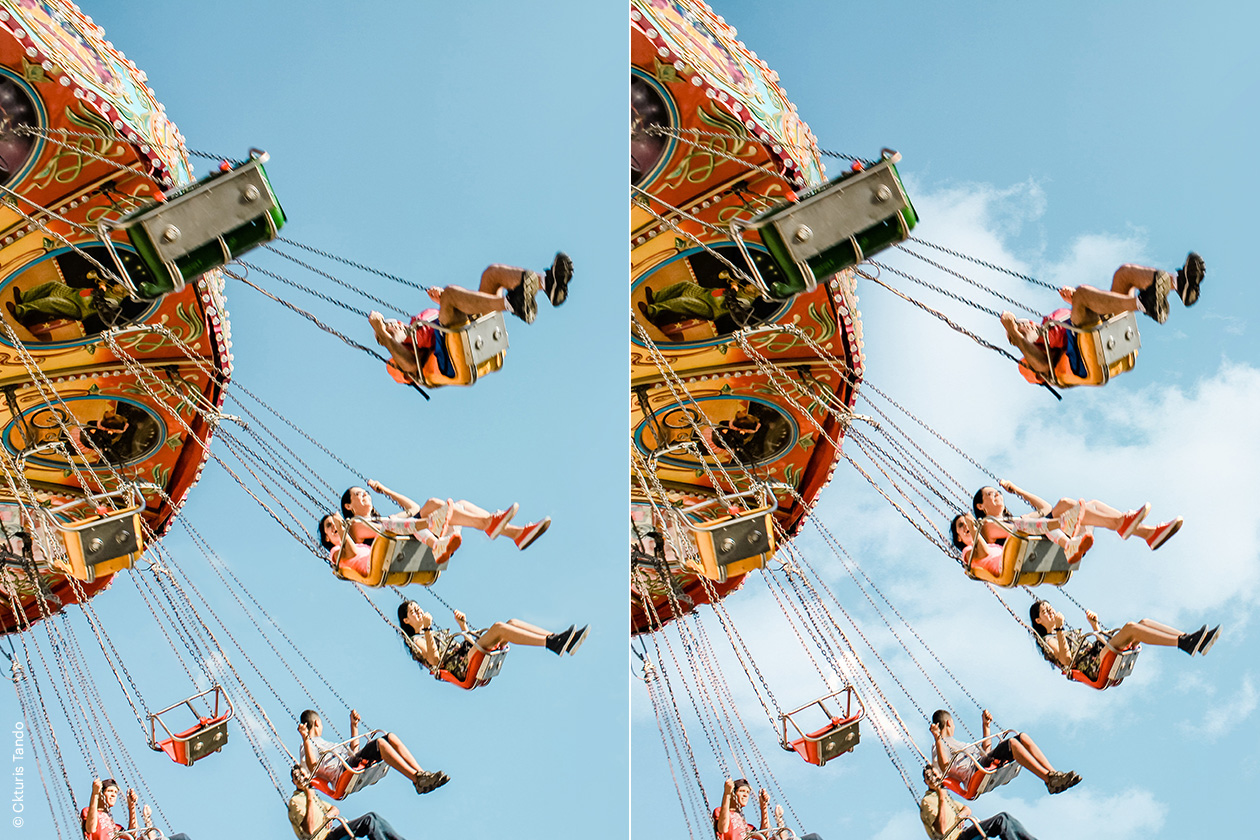Artificial intelligence can now help photographers fix the face distortion caused by wide-angle lenses — or add objects to the sky. The latest update to Skylum Luminar brings an updated list of portrait tools and the A.I. Augmented Sky tool for simpler, realistic sky composites.
A.I. Augmented Sky is designed to add objects to the sky without first masking the sky to separate it from the rest of the image. The tool can be used to create realistic effects, like adding clouds to a cloud-free sky or even adding the northern lights to the night sky. Or, the tool can also be used to create digital art and add planets or fairy tale elements.
Augmented Sky builds on Luminar’s existing ability to separate the sky from the rest of the image. Earlier updates gave the Lightroom and Photoshop competitor the ability to replace the sky without complex masking.
Along with the new Augmented Sky tool, Luminar 4.2 gains updated portrait enhancement tools. Using facial recognition, the tool can now fix shine or hotspots on the skin. The tool works with shine spots on the foreheads and cheeks and automatically generates what Skylum says is “realistic-looking skin, which blends in with the rest of the face” to fill in those spots.
Skylum also updated the software’s Slim Face — previously, the tool only worked with the lower half of the face. With Slim Face 2.0, Skylum says the tool works with the whole face, creating more realistic results and offering the possibility of using the tool for things like correcting the facial distortion created by wide-angle lenses.

The neural network that works to detect the face itself also sees an update, allowing the software to better detect faces that are tilted or partially hidden. The facial detection also works with any skin tone and any age and can detect faces in groups.
The update also brings enhancements to other existing tools, as well as third-party plug-in support for Windows.
Luminar 4.2 is a free update to Luminar 4 users. As part of the launch, new users can get the program for $89 with a free Inspiration Looks pack, the plus edition for $99, or the bundle with Aurora HDR 2019 for $169.






